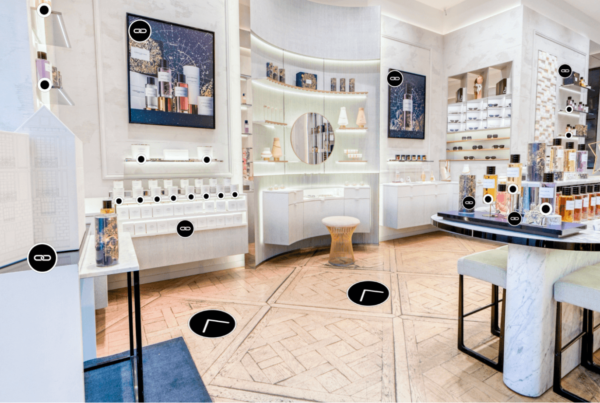The digital world around us is growing at an exponential rate. We’re not just online for work or play anymore; for many of us, almost every aspect of our lives is at least partially online, and digital changes are starting to take shape even in the “real” world. ![]() Augmented reality is changing the way we do many things, like online meet ups in virtual spaces, or even just simply shopping. You can now see what a couch will look like in your living room, for example, via programs that project images of a product right into your home. You can use virtual try-on applications to test out lipstick colors or hairstyles or eyeglasses before buying. Virtual reality is even more immersive, bringing entire worlds to the comfort of your home. These futuristic changes are exciting, and can also be overwhelming. With the creation of the metaverse, the opportunities for AR and VR are even more expansive.
Augmented reality is changing the way we do many things, like online meet ups in virtual spaces, or even just simply shopping. You can now see what a couch will look like in your living room, for example, via programs that project images of a product right into your home. You can use virtual try-on applications to test out lipstick colors or hairstyles or eyeglasses before buying. Virtual reality is even more immersive, bringing entire worlds to the comfort of your home. These futuristic changes are exciting, and can also be overwhelming. With the creation of the metaverse, the opportunities for AR and VR are even more expansive.
What is the Metaverse?
The metaverse is a collection of immersive virtual spaces in a variety of industries. Most commonly, you might imagine video games (like the book and movie Ready Player One), where you create a “player” – an avatar – and move throughout the virtual world via a headset (for now). These virtual spaces are more than just video games now. For example, Microsoft recently announced their push to create an “industrial metaverse,” where businesses can create virtual factories for repairs, supply chain management and production. In cases like this, the metaverse creates a “digital twin” of an existing space, allowing, for example, someone to help repair a product from hundreds of miles away by visiting the space virtually. The HoloLens headset can even be used to help build robots.
Whether for business or personal use, the metaverse offers a whole new way to interact with others. Entering a virtual space means creating a virtual representation of yourself, and that’s where avatars come in.
Your Identity in the Metaverse
A digital avatar is, essentially, a virtual you. You’re almost certainly already familiar with some version of digital avatars – bitmoji is a great example, like Facebook’s and Snapchat’s 3D bitmojis. You can design your character to look just like you, or you can choose any design you like. This character represents you inside virtual spaces. And this is more than just making a character that looks like you; digital avatars are also able to move and act like you, via technology like facial analysis. When you smile, the camera “sees” that and transfers it to your avatar, and your avatar smiles. You move your arm forward to pick up an object in a virtual space, and your digital avatar moves its arm forward and picks up the object. In 2D situations, an avatar can be an extension of you and your reactions, but in the metaverse digital avatars are fully 3D and replicate your whole body. The idea is that your avatar really is you, and not just a picture of you. A true representation of your physical presence.
![]() Digital avatars in the metaverse are fully customizable, and can move between different areas of the metaverse. Digital avatars can even own virtual goods via the blockchain (a distributed database or ledger that digitally stores information electronically). You can also try out avatars that represent different people or animals – see what it’s like to “be” Elvis Presley, or a giant tiger, or a robot building a car. The possibilities, as cliche as this sounds, are truly endless.
Digital avatars in the metaverse are fully customizable, and can move between different areas of the metaverse. Digital avatars can even own virtual goods via the blockchain (a distributed database or ledger that digitally stores information electronically). You can also try out avatars that represent different people or animals – see what it’s like to “be” Elvis Presley, or a giant tiger, or a robot building a car. The possibilities, as cliche as this sounds, are truly endless.
The metaverse is essentially creating a fully functioning virtual world that’ll soon be accessible to anyone with internet access. Even headsets are likely to be phased out as we move towards an even more immersive way to interact in virtual spaces. Digital avatars in the metaverse will be key elements of how we interact personally and professionally in the future. “Character avatars are a jump off point, but in order to develop long term engagement these assets and environments need to continue to provide deeper unique functionalities that help immerse and provide functional benefits to holders,” says Dorian Johannink, co-founder of Seekers and Sylo and a leader in the industry.
The future, as they say, is now. Face analysis is a major component of building digital avatars, and the technology is getting better every day. Keep an eye out for industry developments in this area; soon enough it’ll be a major part of your everyday life.



